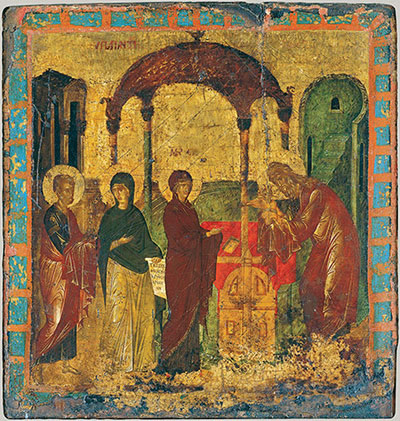

|
|
|
|
|
|
Hallo again to all. 
This week marks Candlemas—or the Feast of the Presentation of Our Lord, or still yet Chandeleur, if you prefer—along with St Brigid's feast the day before. This is to say nothing of the non-Christian European rites that share a calendar date in early weeks of February (the Lupercalia and Imbolc, for example). We suppose there is something special about this border time, not quite winter nor quite yet spring (or summer heading into autumn for our Anglican friends in terra australis). The calendar of the church year reflects that liminality too. The tinsel and festivities of Epiphany and Christmas are well and truly done, but they have not become the ashes of Lent. The holiday that grew into Candlemas, so named for the blessed candles distributed to parishioners, has long liturgical roots in the history of Christ's presentation at the Temple. Sermons for the occasion appear in the writings of the church fathers of Jerusalem by the early fourth century, but perhaps the best telling of the liturgical celebration comes from a mother of the faith, Egeria. About her we know little, save that she was probably from western Europe and made a pilgrimage to Jerusalem sometime around AD 380. In her telling of the journey, likely written to a group of fellow nuns, she gives an account of the church year at Jerusalem. Her account of 2 February gives us a glimpse at what the Feast of the Presentation looked like then: The forty days from Epiphany are clearly celebrated with the highest honor here. On that same day there is a procession into the Anastasis;† everyone processes and conducts all things in their set order with the greatest joy, as if for Easter. All the priests, and likewise the bishop, preach about that passage in the Gospel, when on the fortieth day Joseph and Mary brought the Lord into the temple, and Simeon and Anna the prophetess, daughter of Phanuel, saw him and further about their words, which they said at the sight of the Lord, and about the offerings which his parents brought. And after a little while, when everything has been celebrated in the customary order, the sacraments are conducted and then the people are dismissed.‡ The words of Egeria tie us, even over the distance of Roman roads and centuries, to the Christians of Jerusalem, who also marked this day as a high feast—and in the rare voice of a woman from antiquity. We also remember the day, indirectly at least, every time we say a Compline service, here in the words of Simeon from the 1662 Book of Common Prayer: Lord, now lettest thou thy servant depart in peace according to thy word. And so, at the close of January and beginning of February, we find light in a moment of pause, whether with Egeria in Jerusalem, in the words of the Nunc Dimittis, or in the days leading up to Lent. See you next week.
|
||
This web site is independent. It is not official in any way. Our editorial staff is private and unaffiliated. Please contact editor@anglicansonline.org about information on this page. ©2015 Society of Archbishop Justus. Please address all spam to press@anglicansonline.org |